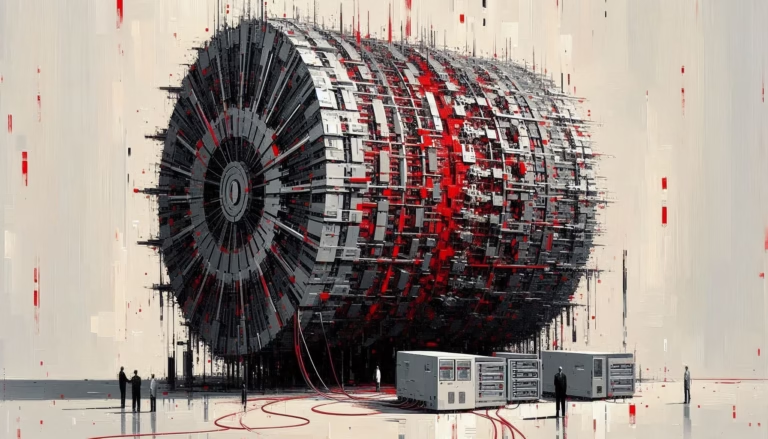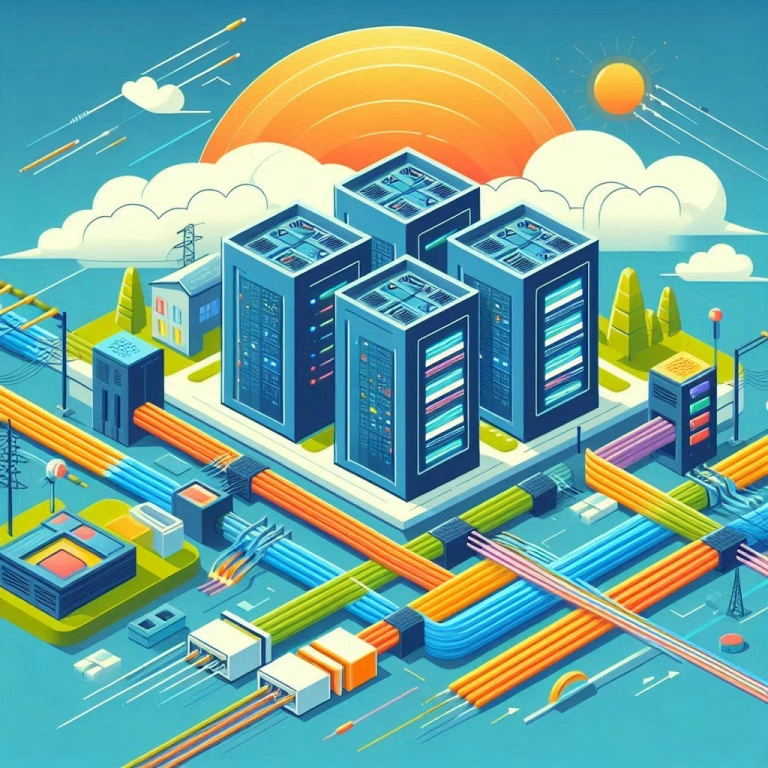Managing airflow in a data center is one of the most important factors in ensuring efficient cooling, reducing energy costs, and maximizing IT performance. Two widely used approaches—Cold Aisle Containment (CAC) and Hot Aisle Containment (HAC)—are designed to separate hot and cold airflows. But which one is best for your facility?
Understanding the Basics
Cold Aisle Containment (CAC) involves enclosing the cold aisle, directing chilled air efficiently to the front of IT equipment while preventing it from mixing with warmer ambient air. This ensures consistent intake temperatures and reduces cooling inefficiencies. However, it can lead to higher return air temperatures at the CRAC/CRAH units, which may impact their performance.
Hot Aisle Containment (HAC), on the other hand, encloses the hot aisle, channeling the warm exhaust air directly to the cooling units. This improves heat isolation, allowing higher return air temperatures, which enhances cooling efficiency. However, working conditions inside the enclosed hot aisle can be uncomfortable for personnel, requiring ventilation solutions.
Energy Efficiency and Cost Savings
One of the main reasons for adopting containment strategies is to improve Power Usage Effectiveness (PUE). Cold Aisle Containment typically improves PUE by 10-15% compared to traditional open cooling designs. However, Hot Aisle Containment can achieve even greater savings—up to 20-30%—by optimizing the efficiency of CRAC/CRAH units through higher return air temperatures.
In a Tier III financial data center in Europe, the facility initially implemented Cold Aisle Containment, reducing cooling costs by 12%. However, when switching to Hot Aisle Containment, they observed an additional 8% efficiency gain, bringing the PUE down from 1.56 to 1.38.
The improved efficiency of HAC comes from the fact that higher return air temperatures allow the cooling system to operate at its most optimal level, reducing the workload on chillers and increasing their lifespan. On the other hand, while CAC also prevents air mixing, it does not allow for the same temperature differential, making it slightly less efficient in environments with high thermal loads.
Implementation and Retrofitting Considerations
For existing data centers, Cold Aisle Containment is often easier to retrofit, especially in raised-floor environments. It requires minimal structural modifications, making it a cost-effective solution for facilities looking to improve cooling without major overhauls.
In contrast, Hot Aisle Containment requires a well-defined return air path, often involving ceiling plenums or dedicated ducting. This makes it more complex and expensive to retrofit but offers greater long-term efficiency benefits. Initial CAPEX for CAC ranges from €400-€600 per rack, while HAC typically costs €800-€1,200 per rackdue to the additional infrastructure requirements.
Furthermore, the maintenance aspect plays a significant role in decision-making. With CAC, the cold aisle remains comfortable for data center personnel, making maintenance easier and more efficient. In contrast, HAC creates a much hotter environment within the enclosed aisles, requiring additional ventilation and cooling measures to maintain a safe working space for technicians.
Fire Safety and Compliance
Fire safety is a crucial consideration in containment deployment. Cold Aisle Containment is generally easier to implement within existing fire suppression systems, as the cold aisle remains open to sprinkler coverage.
Hot Aisle Containment, however, may require additional smoke detection and fire suppression systems, increasing costs and regulatory challenges. A Swiss colocation provider implementing HAC had to invest €150,000 in extra fire safety measures, whereas a Cold Aisle Containment deployment in Germany required no major modifications.
Fire regulations vary by region, with some requiring active suppression systems inside the contained aisle. In such cases, HAC can be more challenging to implement, as it may necessitate extensive modifications to ensure compliance with ASHRAE and EU Code of Conduct standards.
Long-Term Cost Analysis
When considering Total Cost of Ownership (TCO) over 10 years, Cold Aisle Containment offers lower initial costsand moderate energy savings. However, Hot Aisle Containment, despite higher CAPEX, delivers greater long-term operational savings due to its improved cooling efficiency.
- Cold Aisle Containment: Lower upfront investment, moderate OPEX savings (~10-15%).
- Hot Aisle Containment: Higher initial cost, significant OPEX savings (~20-30%).
Which Containment Strategy is Best for You?
- If your data center is already built, and you’re looking for quick, cost-effective cooling improvements, Cold Aisle Containment is the best option.
- If you’re designing a new data center or have a high-density environment, Hot Aisle Containment will yield better long-term efficiency.
- Fire safety compliance should be a key factor—Hot Aisle Containment may require additional investment in suppression and detection systems.
Best Practices for Deployment
- Assess your facility layout before deciding on CAC or HAC.
- Consider fire safety and regulatory requirements early in the planning phase.
- For high-density deployments, invest in Hot Aisle Containment for maximum efficiency.
- For legacy data centers, choose Cold Aisle Containment for simpler implementation.
- Monitor performance post-implementation to ensure maximum cooling effectiveness.
- Use computational fluid dynamics (CFD) simulations to predict and optimize airflow before containment installation.
- Plan for scalability—ensure the chosen containment strategy will accommodate future IT load increases.
By choosing the right containment strategy, data center operators can reduce costs, improve energy efficiency, and extend IT equipment lifespan, ensuring a more sustainable and cost-effective infrastructure. Whether opting for Cold Aisle Containment for its ease of implementation or Hot Aisle Containment for its superior efficiency, understanding the trade-offs is key to making an informed decision that aligns with operational goals and financial constraints.





